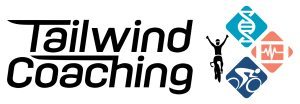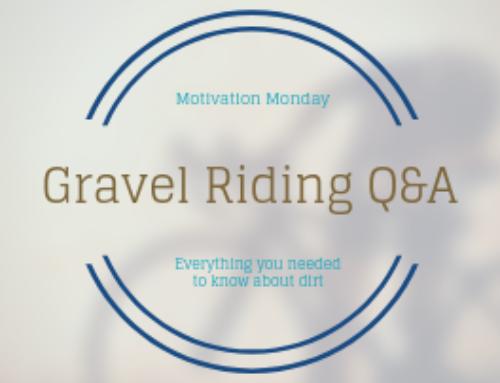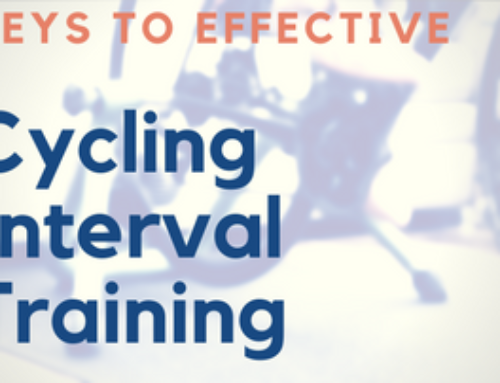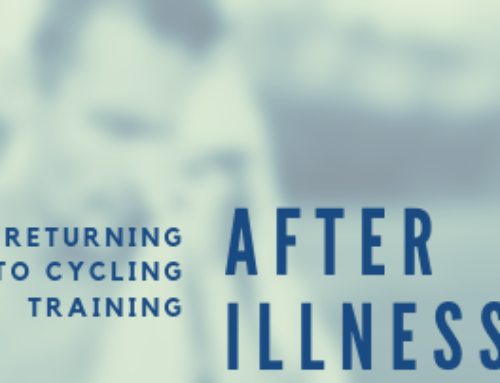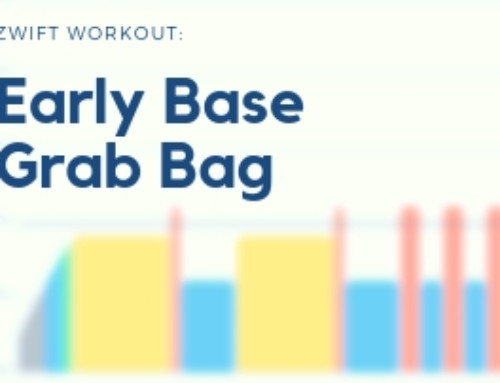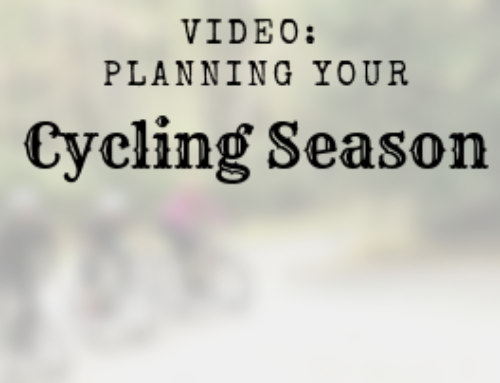If you’re a cyclist looking to improve your performance, winter is the perfect time to adjust your bike training routine for the coming season. You can get your plan for next season down and start attacking your goals and objectives early. And by starting early, you can ensure you don’t panic as you get closer to your season targets.
The thing to remember is that your offseason isn’t a mashup of cross training, strength training and riding. All of your training should be carefully evaluated and scheduled to maximize the effectiveness of each workout. In order to do that, you need to get your off-season preparation started NOW.
Click through the break and I’ll show you how to get started on building your most effective off-season bike training program ever!
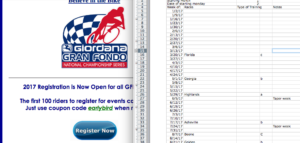 Set Off-Season Goals And Objectives
Set Off-Season Goals And Objectives
So you’re looking to get your off-season started right. First things first: you have to figure out where you’re going in order to plan how to get there. You can learn about setting season goals in detail if you listen to my podcast, “Setting SMART Goals” but here are a few quick tips to help you out.
Season goals and season objectives are not the same things!
When athletes talk about the season objectives, I often hear them discussing specific races and event outcomes. This is a bit misguided: your season goals are the individual events that you’re targeting. Your season objectives are the overarching fitness objectives that you set during the planning portion of your off-season. Some examples of season objectives are “improve climbing endurance” or “increase VO2 max power”.
Usually, these objectives are set to combat the weaknesses you discovered during your season review (check out my podcast on Analyzing Your Cycling Season for more information on how to evaluate your season.) These objectives should not only mitigate your weaknesses, they should also be in line with helping you achieve your season goals. For example, it doesn’t make any sense to have an objective such as “improve power in my TT position” when your major season goal is a hilly road race or hill climb.
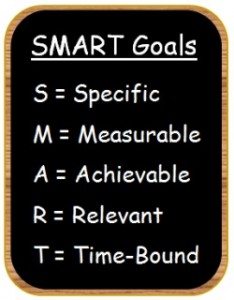 Set your specific season goals and objectives
Set your specific season goals and objectives
Your season goals should be the first thing you build onto your calendar. Start by checking out my Season Planning Worksheet and setting up your goal event dates and priorities. These goals are the key to building your season plan and will direct your off-season bike training. These goals will also direct your season objective planning more specifically.
Once you have your season goals mapped out, it’s time to specify your season objectives. As mentioned above, these are the season long fitness objectives you’ll be building towards. They are heavily influenced by your season goals and should be seen as stepping stones towards achieving those goals. For example, if your major season goal is a podium in a time trial, one of your season objectives should revolve around building functional threshold power and endurance. You may set one of your season objectives to be a 25 minute 10 mile TT test (or even faster, depending on where you’re starting.) Another objective may be to improve your aero position through core stability work, stretching and tweaking your bike setup. Basically, look at what you want to accomplish and use your objectives to define the stepping stones to get there.
Once you’ve built your calendar out and defined your goals and objectives, it’s time to look at your bike training program itself. This is where you can really make magic happen.
Recommendation: Build out your training schedule by setting your goals first, your objectives second and organize your training around them.
Build Towards Your Goals With A Variety Of Bike Training Programs
Building fitness through the off-season isn’t just about riding endless base miles. In fact, most cyclists don’t need a lot of traditional base training during the off-season at all. The quickest way to build fitness involves the use of high-quality tools combined with a specific, high-quality training program. When paired to your season objectives, you can realize big gains in a short period of time if you’re being focused enough.
What does a good off-season training plan look like?
A solid off-season bike training plan will involve work on and off the bike. You’ll need this variety to keep your body guessing and continue adapting throughout your off-season program. If you just keep riding your bike, your body gets wise to the stimulus of riding your bike and gets more efficient. Once it’s “happy” with how it performs, it won’t build anymore, so you need to jump start it with some variety.
Core strength and stability training is a must for a long duration season. During your early off-season, I recommend you start working on core stability and strength first. These two key parts of your fitness will allow you to build any amount of bike training on top of them and keep you injury free and performing at a high level. In fact, if I could convince you to do just one thing different this off-season, it would be to start strengthing your core. I can say that you will almost certainly feel a difference once you ramp up your cycling intensity.
If you’re puzzled about how to go about why you should start a core training program or how to do it, check out my podcast on the Truth About Cycling Core Strength and take a look at my Unbreakable Core Stability program.
Recommendation: Work a core strengthening routine into your training program at least 3 days per week during your off-season. As you progress into your base and build phases, taper down to 2 days per week in base and 1 day per week in the build phase. This will ensure you stay strong and stable throughout the toughest of your training.
Strength training off the bike is a solid way to get some cross training stimulus into your off-season program. Muscular force is one of the key components to producing power on the bike. In fact, power is equal to the product of force times velocity, described as P(w)=FV. Velocity refers to circumferential pedal velocity, otherwise known as cadence (which we will deal with later.) To increase your power production, you can increase cadence or increase force (or both.) By including a strength component in your off-season training, you can increase the force production during the pedal stroke. This, in turn, increases your power output.
Recommendation: Focus on strength training exercises and programs that complement the kind of muscle contractions seen during a pedal stroke. These actions are similar to a leg press or squat. Adding a strength workout two to three times per week during your off-season can compliment your on bike work significantly. Focus on exercises such as squats, Romanian deadlifts, leg presses, lunges and other posterior chain exercises. Don’t forget to balance out some upper body work to help you control the bike a little more efficiently.
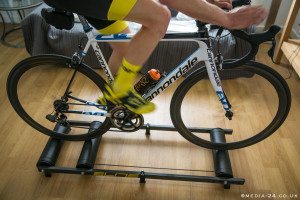 What does a good base training program look like?
What does a good base training program look like?
You may be asking why I’m covering base training here since I did an entire podcast about it in the past. It’s important because your off-season training program overlaps heavily with your base training time. In fact, much of your off-season will be considered “base training” because you’ll be building fundamental skills that you’ll carry through into the build phase.
In terms of fundamental skills, you’re looking for a base program that relies heavily on sweet spot training, muscular endurance training, and neuromuscular coordination drills. You’ll also want to get in some VO2 ma work to help raise that aerobic ceiling and break up the monotony of your training a little bit.
Sweetspot training (or SST) is the perfect way to build aerobic endurance and increases a whole host of physiological parameters. I’ve talked about sweet spot training a lot in the past, but it’s worth discussing again. Sweet spot training increases plasma volume, which in turn increases stroke volume from the heart. This means more red blood cells are pushed through your working muscles during exercise, dropping off precious oxygen you need to produce power. SST builds mitochondrial enzyme density to help make your muscle cells more efficient at processing that oxygen that comes with the increase in stroke volume. Your body will also increase muscle glycogen storage and fatty acid storage to use as aerobic fuel. All of these combine to deliver an increase in lactate threshold or functional threshold power (depending on how you’re measuring your progress.)
Muscular endurance training (or ME) is one of the absolute cornerstones of a good off-season bike training program. It’s also important to be able to handle the difficult intervals of a focused build phase. But what is muscular endurance exactly? I’ve talked about it before (here and here) but let’s recap: ME work is the key to creating a strong, fatigue resistant base of cycling fitness.
When the muscle expends its available fuel stores and metabolic resources but is asked to continue working, cramping and fatigue sets in. In order to prevent this, repeatedly forcing the muscle to contract under load will create adaptations that include increased muscle glycogen and fatty acid storage as well as neuromuscular adaptations that result in fatigue and cramping resistance. One of my favorite ways to make your training more efficient is to combine your sweetspot and muscular endurance training together in a single interval.
Neuromuscular capacity is one of the best ways to build efficiency and create improvements in your fitness without raising your functional threshold power or VO2 max capacity. How can you get faster without increasing your power output? Easy, efficiency is the answer. Neuromuscular capacity is the ability of your nervous system to talk to your muscles.
Each and every muscle is comprised of a whole bunch of muscle fibers, which are organized into bundles called “fascicles.” When you want to move your legs, your brain sends a signal to your muscles asking a whole bunch of those fascicles to contract at about the same time to move your joints. The first few times you pedal a bike, those contractions are pretty uncoordinated. When your muscle fascicles don’t contract together, they end up fighting each other a little bit, resulting in some lost efficiency. You actually lose potential power because your muscles don’t work together very well.
Training with neuromuscular intervals will help you improve your efficiency. This increases the amount of power you can put to the pedals during later interval training.
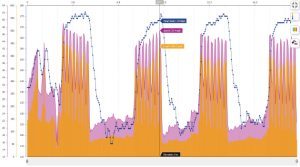 VO2 max capacity is the final major tool in your off-season/base training toolbox. I’ve talked about how raising your fitness ceiling is one of the main goals of your training. Starting in the base phase will give you an extra jump on your build phase goals. Adding VO2 Max intervals to your base training will allow you to realize bigger functional threshold power gains later on.
VO2 max capacity is the final major tool in your off-season/base training toolbox. I’ve talked about how raising your fitness ceiling is one of the main goals of your training. Starting in the base phase will give you an extra jump on your build phase goals. Adding VO2 Max intervals to your base training will allow you to realize bigger functional threshold power gains later on.
Most of the time, you’ll hear that you should avoid high-intensity work during the base phase. Different people will point to the risk of burnout from high-intensity work too early in the season. If you have planned your season properly, you won’t burn out on 1 day per week of high-intensity work during the base phase, so don’t sweat it.
Recommendation: During the base phase, you’ll want to focus on muscular endurance, SST, and neuromuscular training. ME and SST intervals should be on your schedule 2-3 times per week. Neuromuscular training should be on your calendar 2-3 times per week at differing intensities. You should include short high-intensity VO2 max work 1-2 times per week (depending on what part of the base phase you’re in.)
Once you have your goals and objectives set and your training plan in place, it’s time to execute it.
My Personally Recommended Tools To Help You Meet Your Objectives And Goals
Off-season and base phase training can be monotonous and boring. It sometimes involves hours inside lifting weights and riding on the trainer. There are a couple of options that can help make those indoor hours more interesting. Here, I’ll focus on bike training tools that will help you get the most out of your indoor training.
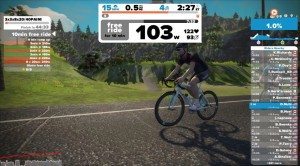 Zwift
Zwift
I’ve done a couple posts on Zwift in the past. I’ve talked about muscular endurance training with Zwift, the Zwift workout builder, Fartlek training with Zwift and how to roll climbs in Zwift. The nice thing about using Zwift for some of your indoor training is the interactive aspect it brings. You don’t have to toil away in your living room alone. You can ride with virtual partners around the world. You can even jump into a race if you want to test your fitness at some point.
On the downside, Zwift does have the potential to drag you away from your daily workout objectives. If you aren’t careful, you may find yourself chasing a random wheel. Suddenly, you’re over your target heart rate or power zone and missing the point of your workout. Following a workout in the workout builder makes this much less likely, but it also waters down the major selling point of Zwift itself. Use frequently, but be smart about it.
Stationary trainers and rollers
Trainers are essential to your indoor training. While you can get away with a single trainer for all of your indoor training needs, some trainers are better than others. For muscular endurance and VO2 intervals, you’ll want to consider a true stationary trainer. Why? The solid attachment between the rear axle and the frame of the trainer creates a very solid unit. You can easily hammer without fear of falling over like you may on rollers. Plus, you can get some really high resistances on fluid trainer units that you can’t get on rollers.
Recently, direct drive trainers have become all the rage. These direct drive units actually forgo the usual friction drum for the rear wheel. They mount a cassette directly to the resistance unit and you mount the bike on the cassette. This makes it a super stable platform for doing high-intensity intervals because there’s no tire to slip. On the downside, they can be very expensive and quite bulky.
If you’re looking for a trainer recommendation, I have used the Kurt Kinetic Road Machine fluid trainer for years. If you’re looking to go direct drive but not break the bank, I love the Elite Turbo Muin Smart B+ trainer. If you’re on a budget, you can get a really nice Cyclops Magneto Trainer for about half of the Kurt Kinetic.
For neuromuscular development, nothing beats a good set of rollers. Being free floating on the drums forces you to be smooth and fluid. You learn how to relax the upper body and smooth out your pedal stroke and stay on target. There are few better ways to develop neuromuscular skills and a buttery smooth pedal stroke. If you’re interested in adding a set to your training tools, I love the Kinetic Z rollers.
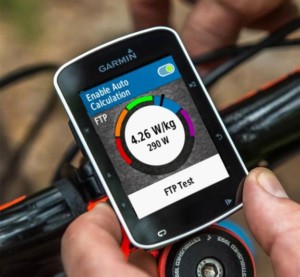 Tools to help you quantify your training
Tools to help you quantify your training
If you’re going to train and work towards fitness goals, you’ll need a way to quantify the training you’re doing. Building fitness is much easier when you have a set of tools to measure your fitness gains with. In reality, if you’re not measuring what you do, all your training is a shot in the dark.
You’ll definitely need a way to record your bike training. I personally love the Garmin Edge 520. It’s compact, simple and has a ton of features. Aside from the usual power metrics, you can download apps from Garmin to expand the 520s capabilities. Two of my favorites are the CPScience app and the Skiba W’ balance app. Both of them are very helpful in executing high-quality VO2 Max intervals so you know when you’re training in a depleted state.
To use any of those fancy metrics, you’ll need a power measuring device. Training with power has been discussed before. To put it bluntly, training with functional threshold power is the most reliable and objective way to measure improvements. I’ve always been a huge fan of Stages Power Meters for their simplicity and ease of use (you can check out my review here). Recently, the guys over at Power Meter City have jumped into the market. They have quite a few lines of power meters for every budget and shouldn’t be overlooked.
Wrapping It All Up
With the tips and tools I’ve given you, your off-season bike training should be much simpler. Don’t forget to go back to your fundamentals. Build core strength and stability off the bike. Hit the gym or do some bodyweight training to build strength off the bike. Focus on muscular endurance and sweetspot training to build up your base of fitness. Mix in plenty of neuromuscular drills and the occasional day of high-intensity work to round it out. Before you know it, you’ll be watching your fitness rise and your objectives will be in touching distance.
If you’re having any trouble figuring out your training, shoot me an email. If you just want it all put together for you, check out my Full Season Training Solution and Advanced Full Season Training Solution. If you have very specific goals and objectives, take a look at all of my downloadable training programs and pick up something to help you reach those goals.
